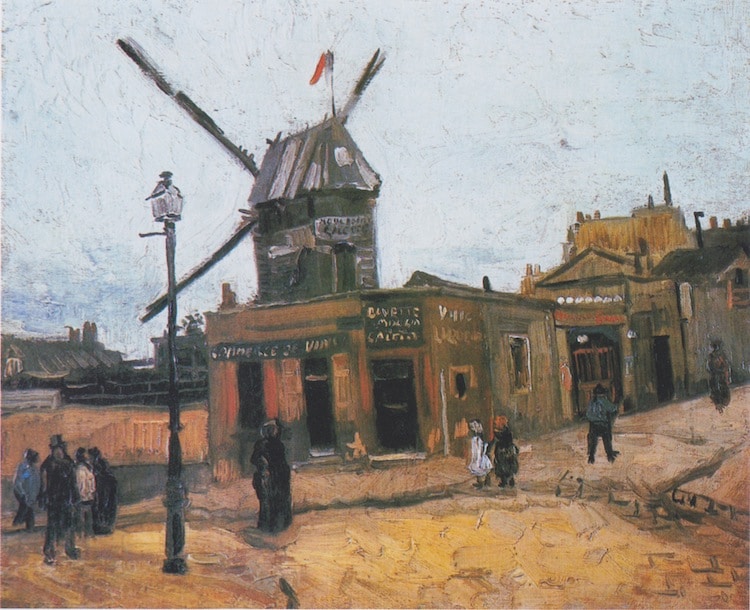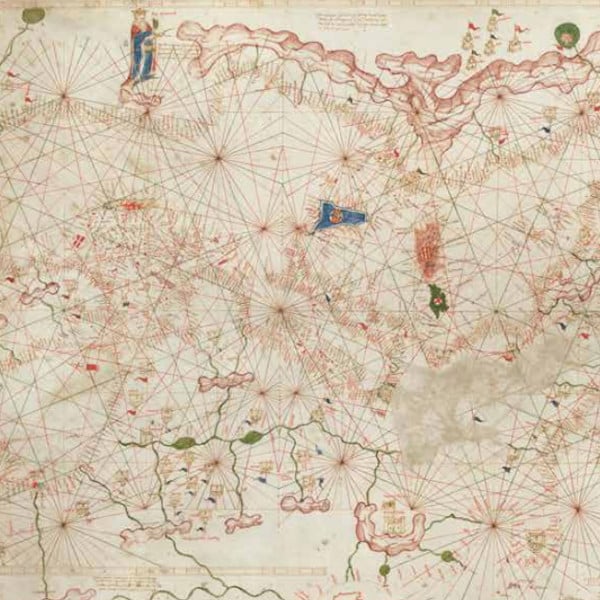
Pierre-Auguste Renoir, “Bal du moulin de la Galette,” 1876 (detail) (Photo: Wikimedia Commons Public Domain)
In the 19th century, the Impressionists pioneered a new way to paint world. Characterized by loose brushwork and a vivid color palette, their paintings challenged traditional notions of the practice. In addition to introducing new stylistic considerations, Impressionist artists are renowned for another unprecedented act: bringing painting out of the studio and into the sunlight.
While many Impressionists worked en plein air, or “in open air,” Pierre-Auguste Renoir is particularly known for his outdoor depictions, with Bal du moulin de la Galette (“Dance at the Moulin de la Galette“) among his most celebrated pieces. Set in a bustling outdoor dance hall in the heart of Paris, this large-scale painting offers us a glimpse into life and leisure during France's Belle Époque.
Bal du moulin de la Galette

Pierre-Auguste Renoir, “Bal du moulin de la Galette,” 1876 (Photo: Wikimedia Commons Public Domain)
Renoir created Bal du moulin de la Galette, an oil painting measuring 52″ by 69″, in 1876. At this time, Impressionism was still in its early stages; Renoir, Claude Monet, Edgar Degas, and Camille Pissarro had held the inaugural Impressionist exhibition just two years prior. By this point, however, the artists associated with the movement had developed unique yet unified approaches to painting.
Renoir, for example, is known for his gauzy brushwork, vivid color palette, and interest in light—all of which he used to produce paintings of his favorite subject matter: people. This approach is evident in Bal du moulin de la Galette; dappled by sunlight, the figures are rendered in loose, luminous brushstrokes. Though many of the subjects are clad in black suits and dresses, a closer look reveals that even these darker hues are made up of a kaleidoscopic collection of colors. “I've been 40 years discovering that the queen of all colors was black,” he famously explained.

Pierre-Auguste Renoir, “Bal du moulin de la Galette” (Photo: Wikimedia Commons Public Domain)
Renoir's radical approach to the color black is even more evident in another version of Bal du moulin de la Galette. Rendered in a more sketch-like style, this smaller (30″ by 44″) painting features looser brushwork that enables viewers to more easily identify the different tones that compose seemingly black subject matter. While it is unclear which piece is the original and which is a copy, the paintings are identical in terms of their iconography, from the sunlit setting to the individual subjects.
Who's Who?

The people featured in Bal du moulin de la Galette are much more than a means to experiment with color or brushwork. In fact, many of them are Renoir's real-life contemporaries.
1. Jeanne Samary

Pierre-Auguste Renoir, “Portrait of the Actress Jeanne Samary,” 1877 (Photo: Wikimedia Commons Public Domain)
This figure is believed to be Jeanne Samary, a French actress who performed at the Comédie-Française, Paris’ premiere theatre. She also served as a muse and model for Renoir, appearing in Le déjeuner des canotiers, or Luncheon of the Boating Party.
2. Estelle Samary
Jeanne's sister, Estelle, also stars in the painting.
3. Pierre-Franc Lamy
The pair is seen speaking to Pierre-Franc Lamy, a French painter and engraver who exhibited his work in the third Impressionist exhibition.
4. Norbert Goeneutte

Pierre-Auguste Renoir, “La Balançoire,” 1876 (Photo: Wikimedia Commons Public Domain)
Across the table is Norbert Goeneutte, a French artist known for his illustrations. Goeneutte also features in Renoir's La balançoire, or “The Swing,” a piece set in the moulin's gardens.
5. Georges Rivière
Seated next to Goeneutte is Georges Rivière, an art critic. Rivière founded the newspaper, L'Impressionniste (“The Impressionist“), and penned Renoir et ses amis (“Renoir and His Friends“), a book about the artist's sitters.
6. Marguerite Legrand

Pierre-Auguste Renoir, “In the Studio (Georges Riviere and Marguerite Legrand)” 1876-1877 (Photo: Wikimedia Commons Public Domain)
Dancing in the background is Marguerite Legrand, a model known professionally as Margot.
7. Don Pedro Vidal de Solares y Cardenas
Margot is paired with Don Pedro Vidal de Solares y Cardenas, a Cuban painter.
The Moulin de la Galette

Vincent van Gogh, “Le Moulin de la Galette,” 1886 (Photo: Wikimedia Commons Public Domain)
The high-spirited painting is set in the original Moulin de la Galette, an outdoor dance hall in Montmartre (an artistic district in Paris). The location was named for the 17th-century moulin, or windmill, found on-site, which was used to produce flour. In 1809, the structure was purchased by the Debray family, who used the milled flour to bake galettes, a special type of brown bread.
The Debrays sold their bread to locals, first with a cup of milk and, eventually, with a glass of wine. In the middle of the 19th century, the Moulin de la Galette grew from a humble manufacturing facility to a buzzing cabaret. On top of attracting Parisians with its leisurely atmosphere, the site appealed to avant-garde artists interested in capturing contemporary scenery. Henri de Toulouse-Lautrec, Vincent van Gogh, Pablo Picasso, and, of course, Pierre-Auguste Renoir are just some of the creative figures who immortalized the Moulin de la Galette in their work.
Legacy
In 1879, Renoir's friend and fellow painter Gustave Caillebotte acquired Bal du moulin de la Galette. It remained in his collection until his death in 1894. In 1896, it entered Paris' Musée du Luxembourg, where it was kept until 1929. It then hung in the Louvre for 57 years, until finding a permanent home in the Musée d'Orsay.
Today, the painting continues to serve as a vital part of the museum's collection, celebrated not only for its distinctive style and monumental scale, but for its role as “a sign of Renoir's artistic ambition.” Still, Bal du moulin de la Galette is more than a highlight of the artist's oeuvre; it is a masterpiece of the Impressionist movement.
Related Articles:
How Female Painter Mary Cassatt Became an Important Impressionist Figure
Why Post-Impressionist Painter Paul Cézanne Is Known as the “Father of Modern Art”
Unraveling the Mystery of Avant-Garde Art
Over 2,000 Paintings by Impressionist and Post-Impressionist Masters Now Free Online























































































